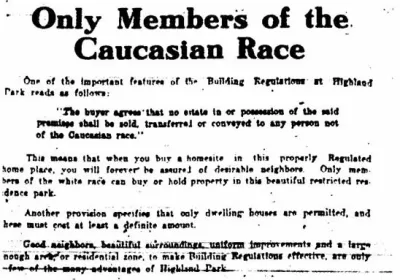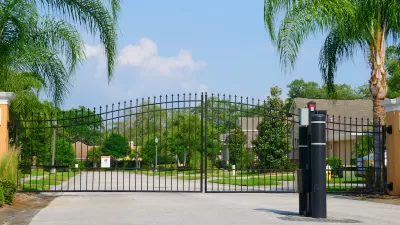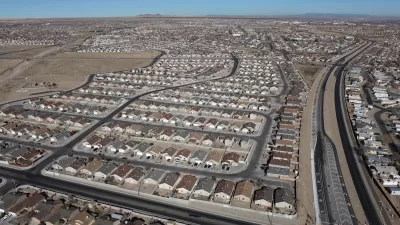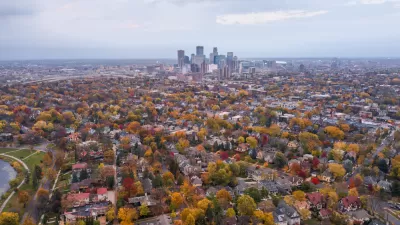Explicitly racist and exclusionary language remains embedded in many communities' restrictive covenants. State legislators and local leaders want to change that.

Although race-based restrictive covenants were rendered unenforceable by the 1968 Fair Housing Act, communities across the country linger in the shadow of their legacy as the language restricting residency remains in many property deeds. Wufei Yu reports on racial covenants in Albuquerque, where mid-century deed restrictions kept Black and Latino residents from buying homes in many parts of the city.
While "some Albuquerque title companies omitted restrictions based on race, color or national origin, scrubbing the racist language from their covenants," many kept the language in its original form. "In March, High Country News reviewed 10 property deeds in historically white neighborhoods closings and found that four of them still included racially offensive language from the city’s segregated past." Despite New Mexico's multiethnic origins—by 1920, the state was "home to nearly 6,000 African Americans, about 500 Asian Americans and over 19,000 Indigenous people"—a backlash against minorities led to the adoption of the "Alien Land Law" in 1921, which "barred people of Asian descent from owning and leasing real estate." The Alien Land Law wasn't removed from the state's constitution until 2006.
Today, "state Senators Daniel Ivey-Soto and Jerry Ortiz y Pino are drafting a bill that would encourage the removal of all racial covenants," calling the language a dangerous precedent for "viciously racist" policies like the 1882 Chinese Exclusion Act.
FULL STORY: Albuquerque’s racist history haunts its housing market

Trump Administration Could Effectively End Housing Voucher Program
Federal officials are eyeing major cuts to the Section 8 program that helps millions of low-income households pay rent.

Planetizen Federal Action Tracker
A weekly monitor of how Trump’s orders and actions are impacting planners and planning in America.

Ken Jennings Launches Transit Web Series
The Jeopardy champ wants you to ride public transit.

Rebuilding Smarter: How LA County Is Guiding Fire-Ravaged Communities Toward Resilience
Los Angeles County is leading a coordinated effort to help fire-impacted communities rebuild with resilience by providing recovery resources, promoting fire-wise design, and aligning reconstruction with broader sustainability and climate goals.

When Borders Blur: Regional Collaboration in Action
As regional challenges outgrow city boundaries, “When Borders Blur” explores how cross-jurisdictional collaboration can drive smarter, more resilient urban planning, sharing real-world lessons from thriving partnerships across North America.

Philadelphia Is Expanding its Network of Roundabouts
Roundabouts are widely shown to decrease traffic speed, reduce congestion, and improve efficiency.
Urban Design for Planners 1: Software Tools
This six-course series explores essential urban design concepts using open source software and equips planners with the tools they need to participate fully in the urban design process.
Planning for Universal Design
Learn the tools for implementing Universal Design in planning regulations.
Ada County Highway District
Clanton & Associates, Inc.
Jessamine County Fiscal Court
Institute for Housing and Urban Development Studies (IHS)
City of Grandview
Harvard GSD Executive Education
Toledo-Lucas County Plan Commissions
Salt Lake City
NYU Wagner Graduate School of Public Service





























